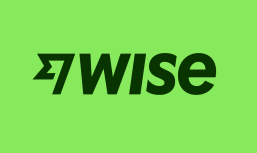A month and a half since the Federal Reserve’s last Beige Book, which takes the pulse of the economy through observations of businesses and community conditions across the central bank’s 12 districts, hiring is slowing and tariffs have weighed on corporate hiring decisions.
Demand for credit is still strong, respondents said, but delinquencies have edged up too.
In the May report, released Wednesday (June 4), the overall tone has been one where “All Districts reported elevated levels of economic and policy uncertainty, which have led to hesitancy and a cautious approach to business and household decisions,” the Fed noted.

Prices have rising at a moderate pace, but the full impact of tariffs have yet to be felt, amid comments from “contacts expecting costs and prices to rise at a faster rate going forward.”
In looking at the labor landscape, “all Districts described lower labor demand, citing declining hours worked and overtime, hiring pauses, and staff reduction plans. Some Districts reported layoffs in certain sectors, but these layoffs were not pervasive,” the Fed wrote in the Beige Book.
Getting bit more granular, economic activity declined slightly across the 12 districts, with half of districts reporting slight to moderate declines in economic activity, while all of them reported elevated levels of economic and policy uncertainty.
Recent data from the Bureau of Labor Statistics sustains these views. April data shows hires and separations saw little movement. The hiring rate remained at 3.5% of the employed population, with no significant changes across industries.

Consumer spending reports were mixed, with most districts reporting slight declines or no change. The outlook was less uniform regarding consumer spending, where five districts signaled at least slightly worsening in conditions, while four pointed at improvements in this area. In fact, some districts reported increases in spending on items expected to be affected by tariffs. Selling price increases remained moderate, but some contacts reported input prices grew strongly with tariff-induced cost increases.
The New York Fed’s contacts, which offer a key glimpse into commercial trends (and financing) remarked that “capital spending plans declined, and the outlook was quite pessimistic.”
Mixed Credit Picture
Consumer credit conditions showed mixed signals across the Federal Reserve districts, per the Beige Book. Overall, credit standards continued to ease, and loan interest spreads narrowed, indicating increased lending activity.
Banking contacts reported healthy credit quality, sustained demand for loans and ongoing success in attracting deposits.
Despite some signs of stress — such as slight increases in delinquencies and loan loss allowances, loan applicants and existing customers generally maintained strong credit profiles. We’ll get more data on consumers’ embrace of revolving and non-revolving credit in upcoming Fed data. PYMNTS Intelligence noted earlier this year that for consumers living paycheck to paycheck with challenges paying bills, credit is used for 41% of essential expenses and 43% of nonessential expenses. In comparison, consumers not living paycheck to paycheck rely on credit for 56% of essential purchases and 63% of nonessentials.
While credit demand remained elevated, concerns persisted around the affordability of loan terms. Additionally, some institutions began incorporating new risk factors, such as tariff exposure, into their credit approval processes, reflecting a cautious approach amid evolving economic conditions.






